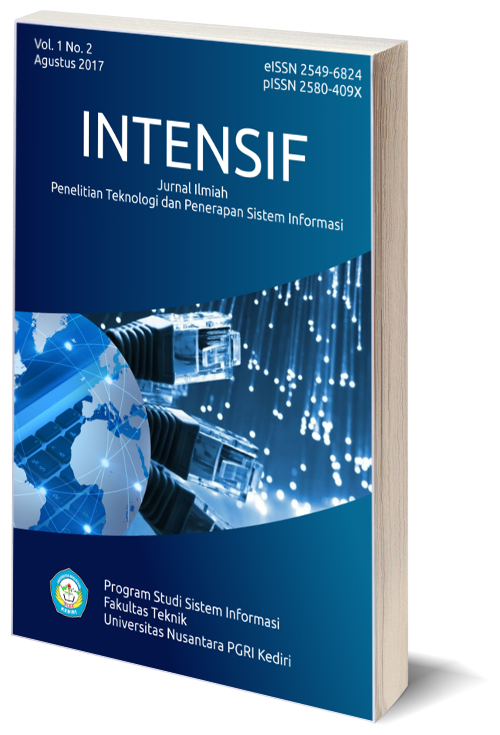Analisis Maturity Level Business Goals 8 Menggunakan COBIT Pada PT. APLIN
DOI:
https://doi.org/10.29407/intensif.v1i2.846Keywords:
Business Goal, COBIT 4.1, Maturity LevelAbstract
PT. APLIN is one of the companies engaged in the Information and Communication Technology (ICT) that serves a variety of customer needs in terms of communication and networking. The dynamic development of IT (Information Technology) resulted in changes in customer needs. PT. APLIN is updating regularly used IT and strives to provide services to meet customer needs. This research was conducted using COBIT 4.1 framework to find out maturity level in four IT process ie PO3 (Determining Technology Direction), AI5 (Procurement of IT Resources), DS2 (Managing Third Party Service) and DS6 (Identifying and Allocating Fees). Where these four IT processes are part of the business goals of achieving cost optimization from service delivery in the customer's perspective. The results showed that the maturity level was at the level of Repeatable but Intuitive for TI processors PO3, DS2 and DS6. While the IT AI5 process is at the Defined level. Planning mechanism of IT resource procurement and budget planning at PT. APLIN is appropriate and well documented. Companies need to improve IT infrastructure development mechanisms and maintain vendor performance relationships or third parties.
Downloads
References
Pederiva, Andrea, 2003, The COBIT Maturity Model in a Vendor Evaluation Case. Information Systems Control Journal, Vol 3, Information Systems Audit and Control Association<br>
Rozas, Indri Sudanawati., 2012, Model Perhitungan Tingkat Kedewasaan TI (Maturity Level) Menggunakan Framework COBIT 4.1, Prosiding Seminar Nasional Teknik Informatika (SANTIKA 2012) Teknik Informatika-Fakultas Teknologi Industri Universitas Pembangunan Nasional “Veteran” Jawa Timur, 10 Maret 2012. pp 73-77, ISSN 2252-3081<br>
Sarno, Riyanarto, 2009, Strategi Sukses Bisnis dengan Teknologi Informasi Berbasis Balanced Scorecard dan Cobit, ITS Press, Surabaya</p>
Downloads
Published
Issue
Section
License
Authors who publish with this journal agree to the following terms:
- Copyright on any article is retained by the author(s).
- The author grants the journal, the right of first publication with the work simultaneously licensed under a Creative Commons Attribution License that allows others to share the work with an acknowledgment of the work’s authorship and initial publication in this journal.
- Authors are able to enter into separate, additional contractual arrangements for the non-exclusive distribution of the journal’s published version of the work (e.g., post it to an institutional repository or publish it in a book), with an acknowledgment of its initial publication in this journal.
- Authors are permitted and encouraged to post their work online (e.g., in institutional repositories or on their website) prior to and during the submission process, as it can lead to productive exchanges, as well as earlier and greater citation of published work.
- The article and any associated published material is distributed under the Creative Commons Attribution-ShareAlike 4.0 International License












